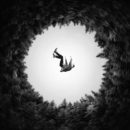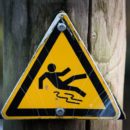Imaginal Exposure vs. In Vivo Exposure for OCD
As I’ve talked about in numerous posts, overcoming OCD involves learning to co-exist with doubt and uncertainty. This idea can be a bit counter-intuitive at first, as many people initially expect OCD treatment to reduce uncertainty. One therapeutic approach that helps with this process is exposure and response prevention (ERP) for OCD. Not surprisingly, ERP consists of two parts: 1) exposure, and 2) response prevention. An exposure is when you do something on purpose to provoke an anxiety spike. By definition, exposures are not accidental; rather, they are pre-planned, deliberate offensive strikes against your OCD. Exposures are designed to help you build up your tolerance to fear-producing situations. Exposures are often completed according to an exposure hierarchy, meaning that people typically complete lower level exposures (i.e., less distressing exposures) before gradually working up to higher level ones. Response prevention...
Read MoreOCD Treatment Group Using ERP
OCD Treatment Group! I am pleased to announce the availability of our new exposure and response prevention (ERP)-based treatment group. The intent of this group is to provide a supportive environment for completing ERPs. Participants wishing to attend are required to register using the links at the bottom of this post. This group will first meet on Saturday (8/10/13), 1pm-3pm. The fees for attending this group are $75/session or $50/session if you pay in advance and commit to a 4-week group treatment sequence. Insurance will not be accepted; however, if you have out-of-network benefits, you may be eligible to submit your bill for reimbursement by your insurance company. Subsequent 2-hour sessions will be held on 8/17, 8/24, and 8/31 @ 1pm. You are free to participate in any or all of these sessions; however, individuals are most likely to...
Read MoreScary Thoughts as Costumes: The Illusion of Danger
It’s nearly Halloween, and kids around the country are digging through dusty closets and plundering the aisles of local Halloween shops in search of the perfect costume. Halloween is the one night of the year when we give ourselves permission to be silly, scary, or fantastical. We can act a little weird, and nobody will disapprove. On Halloween, it’s normal to see the ghastly holding hands with the divine; fairy princesses walk amongst zombies, lions, and super heroes. There is something thrilling about handing over the reins to your imagination…even if it’s only for a single night. But what would happen if the masks got stuck? What if every goblin remained a goblin and every ghost remained a ghost? The children underneath the make-up would still be our children, but their appearance would remain altered. How would we feel...
Read MoreSuicide Obsessions: Fear of Killing/Harming Yourself
Thoughts of death, dying, and suicide are an unfortunate reality for many individuals. In the U.S. alone between 2008 and 2009, approximately 3.7% of adults (8.3 million Americans) reported having suicidal thoughts (Crosby et al., 2011). During that same time frame, approximately 2.2 million U.S. adults reported making specific plans to commit suicide. An estimated 1 million Americans attempted suicide, and 36,035 individuals died as the result of suicide. Clearly, suicidal thoughts and actions impact a significant number of Americans. Although suicidal thoughts are most often associated with depression, suicidal thoughts are not experienced exclusively by those who are clinically depressed. Suicidal thoughts may also accompany other mental health conditions and may even occur in healthy individuals in the general population. Not all thoughts related to suicide pose the same level of risk. Suicidal thoughts can range in intensity....
Read MoreFear of Hurting Other People
The fear of harming others can be a sign of obsessive-compulsive disorder (OCD), a neurobiological condition that is associated with repetitive, intrusive, distressing thoughts that can’t easily be dismissed. Fear of Harming Other People On Purpose Some aggressive obsessions involve the fear of harming others intentionally. In my last post about the fear of hurting other people on purpose, I identified several specific examples of harm obsessions. These included the fear of losing control and murdering your child, the fear of stabbing a loved one, and a variety of other fears involving violent, murderous, or criminal acts. In some of these examples, anger was a trigger for OCD obsessions. Fear of Harming Other People By Accident Other harm obsessions involve the fear of causing accidental harm, usually through negligence or carelessness. Individuals with these fears often feel that if...
Read More







